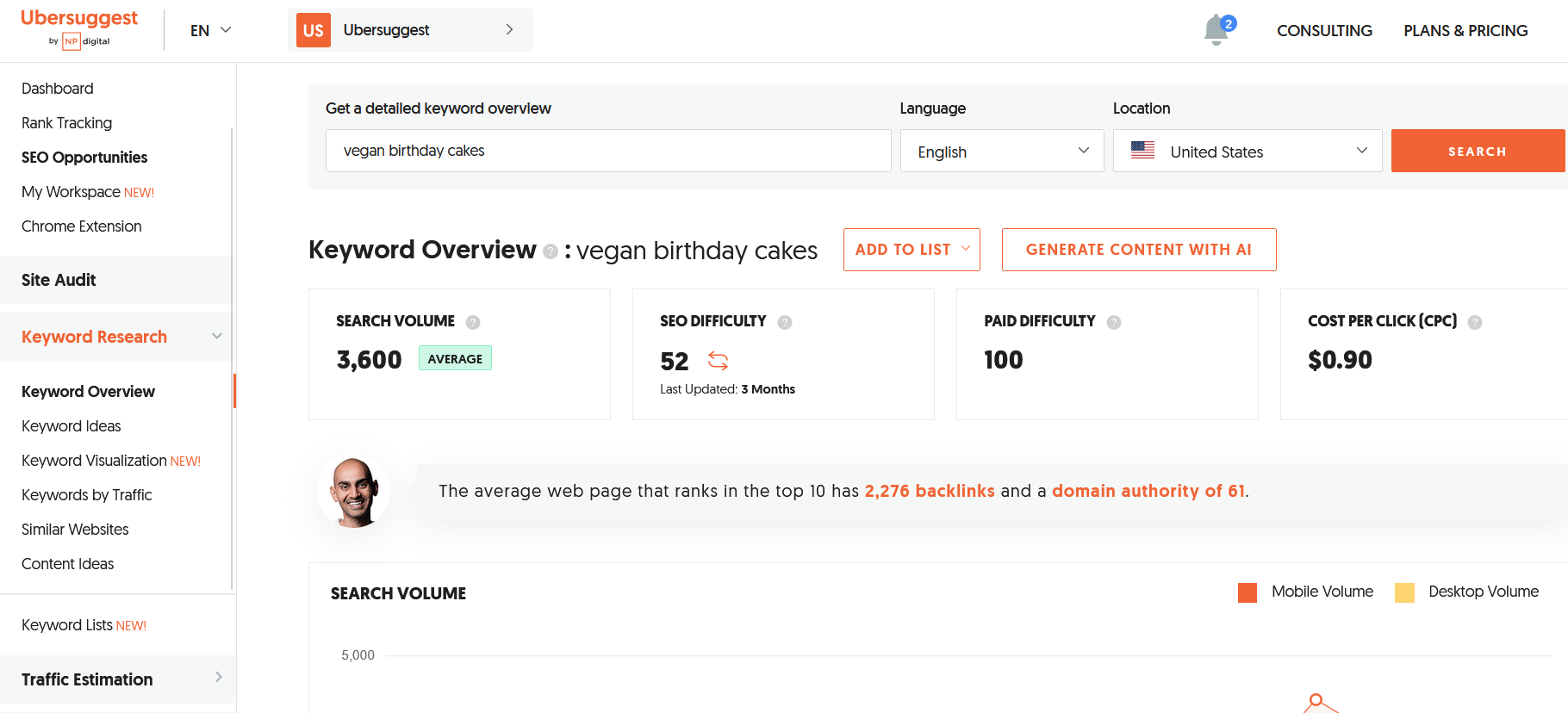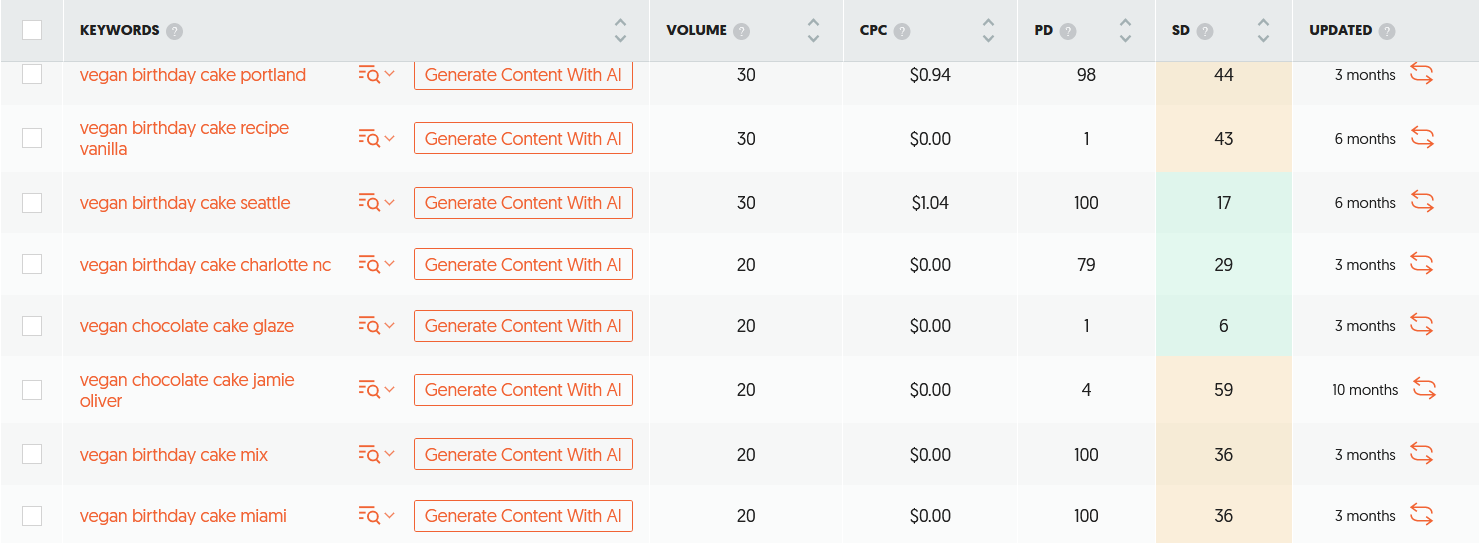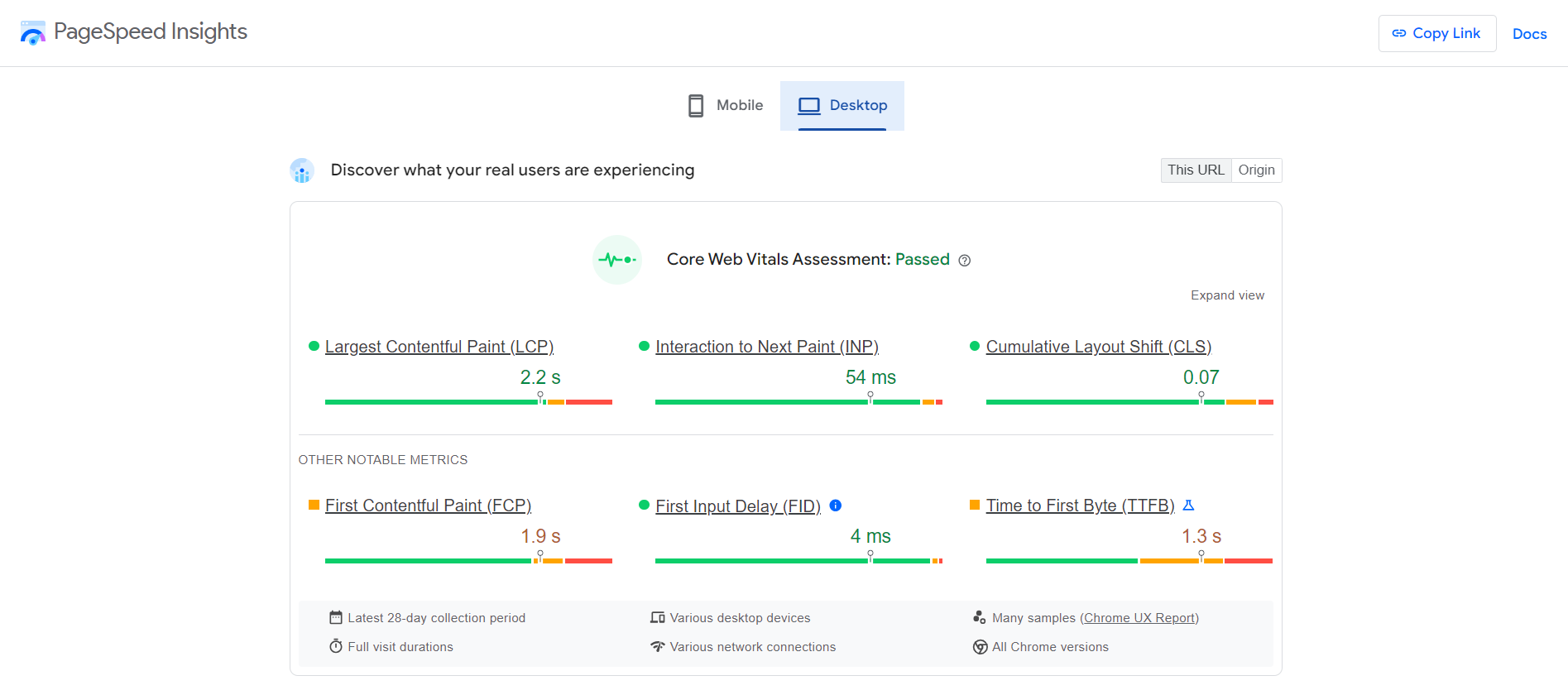How to Optimize Website for Conversions with Effective SEO Strategies

Optimizing your online presence for conversions is no longer a choice but necessary in today's competitive digital landscape. There needs to be more than a visually appealing website to drive success. With millions of websites vying for attention, understanding how to optimize your website for conversions with effective SEO strategies is vital for your site's success.
By implementing strong SEO, you can draw in more visitors and increase your chances of converting potential customers. This approach boosts your visibility and enhances user engagement with your content management, leading to a more successful online presence.
Website optimization for conversions often shows improved metrics, such as time on page and lower bounce rates, which can lead to higher rankings on Google. These optimizations can significantly impact your SEO performance by signalling that your website provides valuable content to search engines.
Below, you'll find information and strategies that will guide you in optimizing your website effectively for both conversions and SEO, allowing you to reap the benefits of both worlds.
What is website conversion?
A "Conversion" refers to any meaningful action a visitor takes on a website that aligns with the site's business goals. It could include purchasing, signing up for a newsletter, downloading a guide, or scheduling a consultation. Conversion is about turning passive site visitors into active participants or customers. Optimizing for conversions can boost user satisfaction and foster repeat visits and loyalty.
Each conversion is a successful endpoint of a visitor's journey on your website, indicating that your content and user interface effectively guide users towards your desired outcomes. Tracking conversions helps businesses measure the effectiveness of their website and marketing strategies. Understanding different types of conversions can aid in optimizing specific pathways to improve overall conversion rates.
How SEO Attracts High-Converting Visitors
SEO acts like a magnet, steadily attracting the ideal customers to your website. By strategically targeting relevant keywords and optimizing your website for search engines, you're not just climbing the search rankings – you're crafting a digital storefront that resonates with the exact audience you want to convert. SEO transforms your website into a conversion machine by ensuring it shows up in search results for queries that signal buying intent.
This laser-focused approach means you're attracting visitors who are already a step ahead in the buyer's journey – actively searching for solutions your products or services provide.
For example you run an online bookstore specializing in historical fiction. With smart SEO, those searching for specific queries like "best historical fiction books" or "historical novels set in Victorian England" are far more likely to encounter your website. This isn't just random traffic; these visitors are already interested in your niche and actively looking for the products or services you offer. Consequently, they're more likely to –
1) Spend more time on your site - Deeply diving into your content and offerings, researching different authors and titles, and getting engrossed in the rich world of historical fiction you've curated.
2) Engage with your content - Reading your in-depth reviews, browsing your curated recommendations, and even signing up for your email list to receive updates on new releases and genre-specific promotions.
3) Purchase a book - SEO pre-qualifies your leads, essentially delivering visitors who are already primed to become customers. They've identified a need or desire, and your SEO efforts have ensured your bookstore appears as the perfect solution.
SEO acts as a bridge between your target audience and your business. By meticulously crafting SEO strategies around high-intent keywords, informative content, and a user-friendly website experience, you're attracting visitors who are actively searching for what you offer.
💡Related - Voice Search SEO: Optimizing for the Future of Search
4 Reasons You Need to Optimize Your Website
There are numerous reasons to master conversions and SEO optimization simultaneously. Understanding how they complement each other is essential to make your website more efficient and effective. Together, they enhance site performance, improving user experience and increasing visibility in search engine results.
Here are four compelling reasons why you should optimize your site now and continuously refine it over time.
1. Make Your Valuable Website for Your Specific Audience
Optimizing your website ensures you tailor it to meet your target audience's needs and preferences. By customizing your site's content, layout, and functionality to align with what your audience seeks, you create a more relevant and engaging user experience. This personalization goes beyond attracting visitors; it involves understanding their behaviours, preferences, and pain points to offer solutions that truly resonate.
The result is increased traffic and a higher conversion rate as visitors find your website helpful and indispensable for their needs. This targeted approach can increase customer satisfaction and loyalty, making your website a go-to resource. Your site remains relevant and maintains its competitive edge by continuously adapting and updating content to meet evolving user expectations.
2. Conduct thorough Keyword Research
Identify keywords relevant to your business and used frequently by your target audience. This research helps you understand your audience's needs and how they express them in search queries. By analyzing search trends and keyword volumes, you can prioritize content creation around topics that matter most to your potential customers.
This strategic approach allows you to optimize your content for better visibility in search engines, potentially leading to higher organic traffic. By understanding the types of traffic sources, you can effectively tailor your SEO efforts to target specific channels.
Using the right keywords can also enhance the effectiveness of your advertising campaigns, ensuring you reach the most interested users. Furthermore, well-chosen keywords help refine your site's metadata and descriptions, which improve click-through rates from search results.
3. Capitalize on Existing Traffic
Optimization isn't just about attracting new visitors; it's also about making the most of current traffic. You can increase the conversion rate among existing visitors by improving site functionality and content. By analyzing user behaviour data such as page views, session duration, and bounce rates, you can identify areas where the user experience may be lacking.
Implementing targeted improvements based on this data can enhance user engagement and more effective conversion pathways, maximizing every site visit's potential. These refinements also help build trust and credibility with your audience, crucial factors in converting visitors into loyal customers.
4. Force Your Website to Work Harder
A well-optimized website works tirelessly to achieve your business objectives, converting visitors faster without requiring constant intervention. By streamlining navigation, improving load times, and ensuring mobile compatibility, your website can better serve visitors and prompt them to take action.
Implementing automation in areas like customer support and email marketing can further reduce the need for manual oversight while maintaining high engagement levels. These enhancements boost efficiency and free up resources for further growth and optimization strategies.
How to Optimize Your Website for SEO in 8 Simple Steps
Boosting your website's SEO (Search Engine Optimization) is crucial for attracting more of the right kind of traffic – engaged visitors who are genuinely interested in what you have to offer. By improving your website's visibility in search engine results pages (SERPs), you significantly increase its accessibility to potential customers actively searching for the solutions you provide. The steps below will establish a strong foundation for SEO success, empowering your website to attract valuable leads consistently. Once these elements are solidly in place, you can shift your emphasis to enhancing the user experience to drive conversions. Continually updating and introducing fresh, high-quality content will keep your site dynamic, engaging search engines and visitors alike.
This multi-pronged approach reinforces your SEO efforts and supports the long-term success of your website. Let's get started -
1. Analyze Your Website Data
A single data point might reveal little, but aggregating various data points can help identify significant patterns. If only a few visitors pay attention to your CTA, it might indicate a minor issue. If a substantial portion of your audience consistently bypasses your CTA, this suggests a need for adjustments.
Tools like user behaviour reports and Google Search Console (GSC) traffic data are invaluable for gaining insights. User behaviour reports detail how visitors interact with your website once they arrive, while GSC provides crucial metrics like session counts, unique session counts, bounce rates, and more.
By analyzing these data sets, you can discern specific patterns and understand referral sources, which offer deep insights into how visitors discover your site. Identify pages that outperform others in traffic and conversions, then analyze what makes those pages effective and apply those successful elements across your website.
2. Conduct thorough Keyword Research
Identify keywords relevant to your business and frequently used by your target audience using tools like Ubersuggest. For example, if you run a vegan bakery, you might use Ubersuggest to search for keywords such as "vegan birthday cakes."

Source - https://neilpatel.com/ubersuggest/
By monitoring trends and seasonal variations in these search volumes, SEO difficulty, Paid difficulty, and cost per click (CPC), you can plan content updates and promotional activities to coincide with peak interest times.
Continue this process as you add more pages to your site. Craft long, detailed articles offering comprehensive information on the topic. This tool provides insights into search volumes, competition, and related phrases, helping you understand how your audience searches for your products.

This knowledge allows you to tailor your website content to match these queries more effectively. By identifying less competitive but highly relevant keywords, you can target niche markets more directly, potentially increasing your conversion rates due to less saturated search results.
3. Produce Long Form Content
Create content that provides genuine value, goes in-depth into topics relevant to your audience, and exceeds the quality of your competitors' offerings. Longer content often ranks better and engages readers more deeply. According to a study by Backlinko, articles over 1,500 words tend to perform better in search results, with even higher engagement for content exceeding 2,500 words.
By thoroughly exploring topics, you establish your site as an authoritative source, which, in turn, can lead to higher trust from visitors and a lower bounce rate. Detailed content increases the likelihood of earning backlinks from other reputable sites, enhancing your SEO efforts and driving more organic traffic. This approach educates your audience and boosts engagement and reach through comments and social sharing.
4. Optimize for On-page SEO
On-page SEO involves -
1. Structuring each page around primary and secondary keywords, including meta tags.
2. Utilizing alt text for images.
3. Featuring an SEO-friendly URL structure.
It's crucial to optimize your page titles and headers with target keywords to enhance search engine visibility. Content should be easily scannable using short paragraphs, bullet points, and subheadings, improving readability and user engagement. Embedding internal links to other relevant pages on your site helps boost SEO by demonstrating the hierarchy and depth of your site's content to search engines.
Ensuring all content is mobile-friendly is crucial, as a significant portion of web traffic comes from mobile devices, and search engines prioritize mobile-optimized sites in their rankings.
5. Optimize for Off-page SEO
Off-page SEO involves -
1. Building your website's authority through external sources by engaging with other publishers.
2. Sharing your content.
3. Participating in online communities relevant to your industry.
Focus on securing quality backlinks from reputable sites, which signal to search engines that your content is valuable and trusted. Strengthen your social media presence to drive more traffic to your website and enhance brand visibility and recognition.
Engage in guest blogging on popular industry sites to expand your reach and establish yourself as a thought leader in your field. Participating in webinars and podcasts can further amplify your visibility and credibility among your target audience.
💁♀️ Also read - Content Repurposing: Maximizing Your Efforts for Traffic and Engagement
6. Build Quality Backlinks
Backlinks from reputable sites drive traffic and boost your site's credibility in the eyes of search engines, which can significantly enhance your rankings and visibility. To attract these valuable links, create high-quality, shareable content encouraging other websites to link to your pages. Implementing content that addresses trending topics or provides unique insights can increase the likelihood of receiving backlinks from industry authorities.
Engage in strategic partnerships with industry influencers and brands that can offer backlinks through collaborations or endorsements. Regularly participating in industry forums and discussions can expose your content to potential linking partners who find your contributions valuable. Also, consider contributing to newsletters and online publications within your industry to broaden your reach and backlink potential further.
7. Optimize the Website for Mobile
With the increasing prevalence of mobile browsing, ensure your site is fully responsive and provides a seamless experience across all devices. It involves using a mobile-first design approach, which prioritizes the performance and layout of your mobile site to cater to most users who access the web via smartphones.
Optimize navigation and button sizes to be user-friendly on touchscreens and ensure that text is readable without zooming. Testing your website on various devices and browsers to guarantee consistency and functionality can also significantly improve the user experience for mobile visitors.
Reduce the loading time of your pages by optimizing images and leveraging browser caching to keep mobile users engaged and decrease bounce rates.
8. Speed up the Pages
Page speed is critical for both search engine rankings and user experience. Faster pages reduce bounce rates and encourage users to engage more extensively with your content. Utilize tools like Google's PageSpeed Insights to test and receive actionable recommendations on improving your website's speed.
Implement techniques such as compressing images, minifying CSS, JavaScript, and HTML, and leveraging browser caching. Additionally, consider using a Content Delivery Network (CDN) to distribute the load and decrease the physical distance between the server and the user, further improving page load times.
Here is an example to help you better understand PageSpeed Insights -

Recommended read - Speed Matters - Web Performance Optimization for Seamless User Experience
SEO Improves Your Website Conversions
By increasing the quantity and quality of your traffic and improving the user experience on your site, SEO helps convert more visitors into customers. It improves your conversion rates and enhances the overall effectiveness of your digital marketing efforts. SEO strategies such as targeted keyword use and content optimization address your potential customer's interests and needs.
By improving site speed and mobile responsiveness through SEO, you reduce barriers to access, making it easier for users to complete conversions. SEO's ability to boost your site's visibility in search results can significantly increase brand trust, further encouraging conversions. Effective SEO enhances local search visibility, crucial for businesses relying on regional customers, thereby driving foot traffic and local online conversions.
Optimizing Your Website for Conversions and Improve the User Experience
Optimizing a website for conversions and user experience boosts engagement and business outcomes. For instance, studies show that a one-second delay in page load time can reduce conversions by 7%, while good UX design could increase conversion rates by up to 400%.
Mobile optimization is crucial; over 50% of web traffic now comes from mobile devices, making mobile-friendly design imperative for capturing this audience. 88% of online consumers are less likely to return to a site after a bad experience. Improving site speed, responsive design, and intuitive navigation enhances user satisfaction and directly impacts the likelihood of converting visitors into customers.
Incorporating accessible design features can broaden your site's appeal and usability, ensuring that all potential customers can navigate and interact with your site effectively, regardless of ability.
Sources -
https://www.akamai.com/
https://www.forrester.com/
https://business.adobe.com/resources/digital-price-index.html/
Final Note
Optimizing your website for SEO is a dynamic and ongoing process. It requires consistent effort and adaptation to evolving search engine algorithms and user expectations. By committing to these strategies, you can improve your search engine visibility and your website's conversion rates, ultimately leading to more success for your business. Implement these strategies thoughtfully and watch as your website starts to work harder and smarter for you.